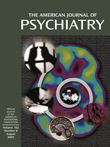Abstract
OBJECTIVE: In abstinent alcoholic patients, a low availability of dopamine D2/3 receptors in the ventral striatum and adjacent putamen was associated with a high level of craving for alcohol. Alcohol craving may also depend on presynaptic dysfunction of striatal dopamine production, which may contribute to the risk of relapse. In this study, positron emission tomography (PET) was used to compare dopamine synthesis capacity in the striatum in alcoholic patients and healthy comparison subjects. METHOD: Positron emission tomography (PET) was used to map the net blood-brain clearance of the dopa decarboxylase substrate 6-[18F]fluoro-l-dopa, an index of dopamine synthesis capacity, in the striatum of 12 detoxified male alcoholic patients and 13 age-matched healthy men. The parametric maps were correlated with results of an earlier [18F]desmethoxyfallypride PET study of dopamine D2/3 receptor availability in the same 12 alcoholic patients and in 12 of the healthy volunteers. Alcohol craving was measured with the Alcohol Craving Questionnaire. Patients were followed for 6 months, and alcohol intake was recorded. RESULTS: The magnitude of net blood-brain clearance in the striatum did not differ significantly between detoxified alcoholic patients and the comparison subjects. However, a voxel-wise correlation analysis of net blood-brain clearance in the alcoholic patients linked low levels of dopamine synthesis capacity in the bilateral putamen with high levels of alcohol craving. After normalization of net blood-brain clearance maps to the voxel-wise estimates of dopamine D2/3 receptor availability, there was still a negative correlation with alcohol craving. Alcohol craving at the time of scanning was associated with high level of alcohol intake in the 6-month follow-up period. CONCLUSIONS: Simultaneous assay by PET of pre- and postsynaptic markers of dopamine neurotransmission indicated that a striatal dopamine deficit correlated with alcohol craving, which was associated with a high relapse risk.



